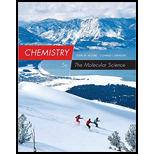
Bundle: Chemistry: The Molecular Science, 5th, Loose-Leaf + OWLv2 with Quick Prep 24-Months Printed Access Card
5th Edition
ISBN: 9781305367487
Author: John W. Moore, Conrad L. Stanitski
Publisher: Cengage Learning
expand_more
expand_more
format_list_bulleted
Question
Chapter 18, Problem 80QRT
Interpretation Introduction
Interpretation:
Radioactivity that is emitted by potassium has to be calculated in
Expert Solution & Answer
Want to see the full answer?
Check out a sample textbook solution
Students have asked these similar questions
For the following alkyne, complete the reaction sequentially (that is draw the intermediate that we can’t stop at) and then name (complete name) all 3 molecules.
Given the reaction sequence below, answer the following.
A. Provide the structure for A.
B. Provide the structure for B (pay attention to stereochemistry).
C. Provide the structure for C.
D. What are the stereochemical designations for I and II (R/S)?
Which of the following is the most stable carbon radical?
Chapter 18 Solutions
Bundle: Chemistry: The Molecular Science, 5th, Loose-Leaf + OWLv2 with Quick Prep 24-Months Printed Access Card
Ch. 18.2 - Prob. 18.1PSPCh. 18.2 - Prob. 18.1ECh. 18.2 - Prob. 18.2PSPCh. 18.2 - Prob. 18.2ECh. 18.3 - Prob. 18.3PSPCh. 18.3 - Prob. 18.3ECh. 18.3 - Prob. 18.4CECh. 18.4 - Prob. 18.4PSPCh. 18.4 - Prob. 18.5ECh. 18.4 - Prob. 18.5PSP
Ch. 18.4 - Prob. 18.6PSPCh. 18.4 - Prob. 18.7PSPCh. 18.4 - Prob. 18.6ECh. 18.4 - Prob. 18.7CECh. 18.5 - Prob. 18.8ECh. 18.5 - Prob. 18.9CECh. 18.6 - Prob. 18.10ECh. 18.6 - Prob. 18.11ECh. 18.7 - Prob. 18.12ECh. 18.8 - Prob. 18.13ECh. 18.8 - Prob. 18.14ECh. 18.9 - Prob. 18.15ECh. 18 - Prob. 1SPCh. 18 - Prob. 2SPCh. 18 - Prob. 3SPCh. 18 - Prob. 4SPCh. 18 - Prob. 5SPCh. 18 - Prob. 1QRTCh. 18 - Prob. 2QRTCh. 18 - Prob. 3QRTCh. 18 - Prob. 4QRTCh. 18 - Prob. 5QRTCh. 18 - Prob. 6QRTCh. 18 - Prob. 7QRTCh. 18 - Prob. 8QRTCh. 18 - Prob. 9QRTCh. 18 - Complete the table.Ch. 18 - Prob. 11QRTCh. 18 - Prob. 12QRTCh. 18 - Prob. 13QRTCh. 18 - Prob. 14QRTCh. 18 - Prob. 15QRTCh. 18 - Prob. 16QRTCh. 18 - Prob. 17QRTCh. 18 - Prob. 18QRTCh. 18 - Prob. 19QRTCh. 18 - Prob. 20QRTCh. 18 - Prob. 21QRTCh. 18 - Prob. 22QRTCh. 18 - Prob. 23QRTCh. 18 - Prob. 24QRTCh. 18 - Prob. 25QRTCh. 18 - Prob. 26QRTCh. 18 - Prob. 27QRTCh. 18 - Prob. 28QRTCh. 18 - Prob. 29QRTCh. 18 - Prob. 30QRTCh. 18 - Prob. 31QRTCh. 18 - Prob. 32QRTCh. 18 - Prob. 33QRTCh. 18 - Prob. 34QRTCh. 18 - Prob. 35QRTCh. 18 - Prob. 36QRTCh. 18 - Prob. 37QRTCh. 18 - Prob. 38QRTCh. 18 - Prob. 39QRTCh. 18 - Prob. 40QRTCh. 18 - Prob. 41QRTCh. 18 - Prob. 42QRTCh. 18 - Prob. 43QRTCh. 18 - Prob. 44QRTCh. 18 - Prob. 45QRTCh. 18 - Prob. 46QRTCh. 18 - Prob. 47QRTCh. 18 - Prob. 48QRTCh. 18 - Prob. 49QRTCh. 18 - Prob. 50QRTCh. 18 - Prob. 51QRTCh. 18 - Prob. 52QRTCh. 18 - Prob. 53QRTCh. 18 - Prob. 54QRTCh. 18 - Prob. 55QRTCh. 18 - Prob. 56QRTCh. 18 - Prob. 57QRTCh. 18 - Prob. 58QRTCh. 18 - Prob. 59QRTCh. 18 - Prob. 60QRTCh. 18 - Prob. 61QRTCh. 18 - Prob. 62QRTCh. 18 - Prob. 63QRTCh. 18 - Prob. 64QRTCh. 18 - Prob. 65QRTCh. 18 - Prob. 66QRTCh. 18 - Prob. 67QRTCh. 18 - Prob. 68QRTCh. 18 - Prob. 69QRTCh. 18 - Prob. 70QRTCh. 18 - Prob. 71QRTCh. 18 - Prob. 72QRTCh. 18 - Prob. 73QRTCh. 18 - Prob. 74QRTCh. 18 - Prob. 75QRTCh. 18 - Prob. 76QRTCh. 18 - Prob. 77QRTCh. 18 - Prob. 78QRTCh. 18 - Prob. 79QRTCh. 18 - Prob. 80QRTCh. 18 - Prob. 81QRTCh. 18 - Prob. 82QRTCh. 18 - Prob. 83QRTCh. 18 - Prob. 84QRTCh. 18 - Prob. 85QRTCh. 18 - Prob. 86QRTCh. 18 - Prob. 87QRTCh. 18 - Prob. 88QRTCh. 18 - Prob. 89QRTCh. 18 - Prob. 91QRTCh. 18 - Prob. 92QRTCh. 18 - Prob. 93QRTCh. 18 - Prob. 94QRTCh. 18 - Prob. 95QRTCh. 18 - Prob. 96QRTCh. 18 - Prob. 18.ACPCh. 18 - Prob. 18.BCPCh. 18 - Prob. 18.CCPCh. 18 - Prob. 18.DCPCh. 18 - Prob. 18.ECP
Knowledge Booster
Similar questions
- Put the following carbon radicals in order of increasing stability.arrow_forwardDraw the major organic product for each of the following reactions (pay attention to stereochemistry).arrow_forwardThere are 2 reactions (that you know of) to achieve the following transformation: One reaction is favored over the other because it avoids a competing reaction. A. Draw the favored reaction scheme (not the mechanism), be sure to include all necessary reagents. B. Draw the reaction scheme that is not favored and include all the possible products.arrow_forward
- Both carbocations and carbon-radicals have trigonal planar geometry. True or Falsearrow_forwardTeflon (polytetrafluoroethene) is prepared via the radial polymerization of tetrafluoroethene. What other reaction conditions (reagent, etc.) are needed to accomplish this? A. NBS, Light B. Heat, Cl2 C. Peroxide, Heat D. H2SO4, H2O, Heatarrow_forwardWhich of the following compounds can be reacted with ethene to prepare 1,1- dichlorocyclopropane? A. CCl4 B. CCl2 C. CHCl3 D. CH2Cl2arrow_forward
- CI 4. How are the products of the following reaction related? (assuming we can control the chlorination as given by the reaction) C Cl2, light A. Enantiomers B. Constitutional isomers C. Regioisomers D. Diastereomers C +arrow_forwardVinyl and allyl radicals are equally stable due to resonance stabilization True OR Falsearrow_forwardAll of the following are true of Markovnikov’s rule EXCEPT A. The nucleophile adds to the most substituted carbon B. The more stable carbocation is formed in the transition state C. The electrophile adds to the carbon that has the most hydrogens D. There are no exceptions to this rulearrow_forward
arrow_back_ios
SEE MORE QUESTIONS
arrow_forward_ios
Recommended textbooks for you
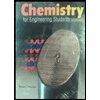 Chemistry for Engineering StudentsChemistryISBN:9781337398909Author:Lawrence S. Brown, Tom HolmePublisher:Cengage LearningChemistry: Matter and ChangeChemistryISBN:9780078746376Author:Dinah Zike, Laurel Dingrando, Nicholas Hainen, Cheryl WistromPublisher:Glencoe/McGraw-Hill School Pub Co
Chemistry for Engineering StudentsChemistryISBN:9781337398909Author:Lawrence S. Brown, Tom HolmePublisher:Cengage LearningChemistry: Matter and ChangeChemistryISBN:9780078746376Author:Dinah Zike, Laurel Dingrando, Nicholas Hainen, Cheryl WistromPublisher:Glencoe/McGraw-Hill School Pub Co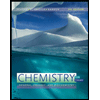 Chemistry for Today: General, Organic, and Bioche...ChemistryISBN:9781305960060Author:Spencer L. Seager, Michael R. Slabaugh, Maren S. HansenPublisher:Cengage Learning
Chemistry for Today: General, Organic, and Bioche...ChemistryISBN:9781305960060Author:Spencer L. Seager, Michael R. Slabaugh, Maren S. HansenPublisher:Cengage Learning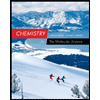 Chemistry: The Molecular ScienceChemistryISBN:9781285199047Author:John W. Moore, Conrad L. StanitskiPublisher:Cengage Learning
Chemistry: The Molecular ScienceChemistryISBN:9781285199047Author:John W. Moore, Conrad L. StanitskiPublisher:Cengage Learning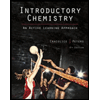 Introductory Chemistry: An Active Learning Approa...ChemistryISBN:9781305079250Author:Mark S. Cracolice, Ed PetersPublisher:Cengage Learning
Introductory Chemistry: An Active Learning Approa...ChemistryISBN:9781305079250Author:Mark S. Cracolice, Ed PetersPublisher:Cengage Learning

Chemistry for Engineering Students
Chemistry
ISBN:9781337398909
Author:Lawrence S. Brown, Tom Holme
Publisher:Cengage Learning

Chemistry: Matter and Change
Chemistry
ISBN:9780078746376
Author:Dinah Zike, Laurel Dingrando, Nicholas Hainen, Cheryl Wistrom
Publisher:Glencoe/McGraw-Hill School Pub Co


Chemistry for Today: General, Organic, and Bioche...
Chemistry
ISBN:9781305960060
Author:Spencer L. Seager, Michael R. Slabaugh, Maren S. Hansen
Publisher:Cengage Learning

Chemistry: The Molecular Science
Chemistry
ISBN:9781285199047
Author:John W. Moore, Conrad L. Stanitski
Publisher:Cengage Learning

Introductory Chemistry: An Active Learning Approa...
Chemistry
ISBN:9781305079250
Author:Mark S. Cracolice, Ed Peters
Publisher:Cengage Learning